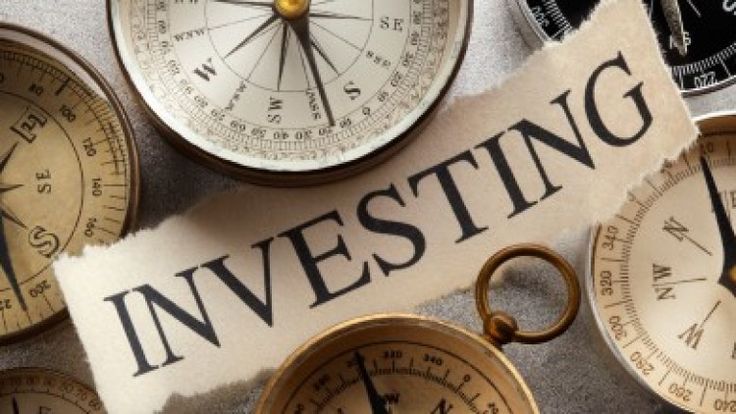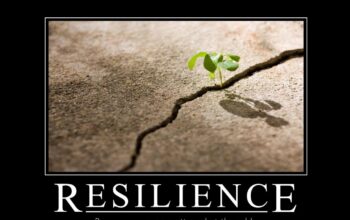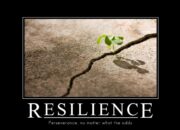In an unpredictable world, the concept of safety extends far beyond physical security. It encompasses a crucial dimension of financial well-being, where strategic decisions today build resilience against the uncertainties of tomorrow. Investing in your safety is not merely about accumulating wealth; it’s about establishing a robust financial fortress that protects your assets, secures your loved ones’ future, and provides invaluable peace of mind. This article delves deep into the multifaceted strategies involved in financially safeguarding yourself, exploring the fundamental principles of risk mitigation, the diverse avenues of protective investments, the critical role of comprehensive planning, and the transformative impact these choices have on individual and familial prosperity.
The Imperative of Financial Safety
Life is inherently uncertain. Job loss, unexpected illness, natural disasters, economic downturns, and countless unforeseen events can swiftly derail even the most carefully laid plans. Without adequate financial safeguards, these disruptions can lead to severe hardship, debt, and chronic stress. Therefore, prioritizing financial safety isn’t an option; it’s a fundamental necessity for building a stable and flourishing life.
The primary objectives of financially investing in your safety include:
A. Mitigating Unforeseen Risks: Protecting against financial losses due to unpredictable events like accidents, health crises, or property damage. B. Ensuring Future Security: Providing for long-term goals such as retirement, children’s education, or significant life milestones. C. Achieving Peace of Mind: Reducing anxiety about financial vulnerability, allowing for greater focus on personal growth and enjoyment. D. Preserving Wealth: Safeguarding accumulated assets from inflation, market volatility, and unexpected liabilities. E. Building Resilience: Creating a financial buffer that allows you to bounce back from setbacks quickly and effectively.
Neglecting these crucial investments can leave individuals and families exposed to devastating financial consequences, underscoring the critical importance of a proactive and comprehensive approach.
Pillar One: Emergency Savings – Your Immediate Shield
The cornerstone of any sound financial safety strategy is a robust emergency fund. This dedicated pool of liquid assets serves as your immediate financial shield against life’s inevitable curveballs. Without it, even minor setbacks can quickly escalate into major crises, forcing reliance on high-interest debt or liquidating long-term investments at inopportune times.
A. Defining Your Emergency Fund
An emergency fund should be easily accessible cash, separate from your regular checking account, and specifically designated for true emergencies. These include:
- Job Loss: Covering living expenses during periods of unemployment.
- Unexpected Medical Bills: For deductibles, co-pays, or treatments not fully covered by insurance.
- Major Home Repairs: Such as a sudden roof leak, furnace breakdown, or burst pipe.
- Car Repairs: Essential for maintaining transportation to work.
- Unforeseen Travel: For family emergencies or critical life events.
B. Determining the Ideal Size
Financial experts generally recommend having three to six months’ worth of essential living expenses saved in an emergency fund. For those with less job security, fluctuating income, or dependents, a larger fund (e.g., nine to twelve months) might be more appropriate. Calculating this involves:
- Listing Essential Monthly Expenses: Rent/mortgage, utilities, groceries, transportation, insurance premiums, debt minimum payments (excluding discretionary spending like dining out, entertainment, subscriptions).
- Multiplying by Target Months: Sum your essential expenses and multiply by your desired coverage period.
C. Optimal Storage and Accessibility
The best place for an emergency fund is in a high-yield savings account or a money market account. These options offer:
- Liquidity: Funds are readily available without penalties or market fluctuations.
- Safety: Accounts are typically FDIC-insured (or equivalent in other countries), protecting your deposits.
- Modest Returns: While not designed for significant growth, these accounts offer slightly better interest rates than traditional checking accounts, helping to offset inflation minimally.
Avoid investing emergency funds in volatile assets like stocks or mutual funds, as you might need to withdraw them during a market downturn, incurring losses.
D. Building and Maintaining the Fund
Building an emergency fund requires discipline and consistent contributions. Treat it as a non-negotiable expense in your budget. Once established, commit to replenishing it promptly if you ever need to tap into it. This proactive approach ensures continuous financial readiness.
Pillar Two: Insurance – Transferring Risk Effectively
While an emergency fund provides a buffer, certain high-impact, low-probability events require a more robust solution: insurance. Insurance is the fundamental mechanism for transferring significant financial risks from individuals to an insurer in exchange for regular premium payments. It’s an indispensable investment in your safety, protecting you from potentially catastrophic losses.
A. Health Insurance: Paramount Protection
Access to quality healthcare is non-negotiable. Health insurance is perhaps the most critical form of coverage, shielding you from exorbitant medical costs that could otherwise lead to bankruptcy.
- Types of Plans: Understanding options like HMOs, PPOs, EPOs, and POS plans, each offering different network flexibilities and cost structures.
- Key Terms: Grasping concepts like premiums (monthly cost), deductibles (amount paid before coverage kicks in), co-pays (fixed fees per service), and out-of-pocket maximums (your annual limit for medical expenses).
- Preventative Care: Many plans cover preventative services (e.g., check-ups, vaccinations) at no extra cost, promoting health and reducing future medical needs.
- Prescription Coverage: Ensuring your necessary medications are affordable.
In countries with privatized healthcare, robust health insurance is a non-negotiable safety net.
B. Life Insurance: Securing Loved Ones’ Futures
If you have dependents (children, a spouse, elderly parents), life insurance is a profound investment in their financial safety should you pass away prematurely.
- Term Life Insurance: Provides coverage for a specific period (e.g., 10, 20, 30 years). It’s generally more affordable and ideal for covering income replacement during working years or while children are dependent.
- Whole Life Insurance (and other Permanent Policies): Provides lifelong coverage and often includes a cash value component that grows over time. While more expensive, it can serve as a long-term financial asset.
- Determining Coverage: Calculate the amount needed to cover debts, living expenses for a set period, education costs, and final expenses. A common guideline is 5-10 times your annual income.
Life insurance offers invaluable peace of mind, knowing your loved ones are financially protected even in your absence.
C. Homeowners/Renters Insurance: Protecting Your Dwelling and Possessions
For most people, their home and its contents represent significant assets. Homeowners insurance (for owners) or renters insurance (for tenants) protects against a wide range of perils.
- Property Coverage: Protects the dwelling (structure) and personal belongings from damage due to fire, theft, vandalism, certain natural disasters, etc.
- Liability Coverage: Protects you if someone is injured on your property and you are found legally responsible.
- Additional Living Expenses (ALE): Covers costs if you’re forced to live elsewhere while your home is being repaired due to a covered event.
- Specific Perils: Understanding what is and isn’t covered (e.g., flood and earthquake insurance often require separate policies).
This coverage is often mandatory for mortgage holders but is a wise investment for anyone seeking to protect their living space and valuables.
D. Auto Insurance: Essential for Vehicle Owners
If you own or drive a vehicle, auto insurance is a legal and financial necessity.
- Liability Coverage: Crucial for protecting you financially if you cause an accident that injures others or damages their property. This is often legally mandated.
- Collision Coverage: Pays for damage to your own vehicle resulting from a collision, regardless of fault.
- Comprehensive Coverage: Protects against non-collision damage, such as theft, vandalism, fire, or natural disasters.
- Uninsured/Underinsured Motorist Coverage: Protects you if you’re hit by a driver without adequate insurance.
Auto insurance is a critical shield against the substantial costs associated with vehicle accidents and related liabilities.
E. Disability Insurance: Protecting Your Income Stream
Your ability to earn an income is your most valuable asset. Disability insurance provides income replacement if you become unable to work due to illness or injury.
- Short-Term Disability (STD): Covers a brief period (e.g., 3-6 months). Often provided by employers.
- Long-Term Disability (LTD): Provides benefits for extended periods, even up to retirement age, if you’re permanently unable to work.
- Coverage Amount: Typically replaces 60-70% of your pre-disability income.
This insurance is a vital safety net, preventing financial ruin if your primary income source is cut off.
Pillar Three: Strategic Investments for Long-Term Safety
Beyond immediate emergency funds and risk transfer via insurance, investing strategically for the long term is crucial for safeguarding your financial future and achieving robust financial safety. This involves growing your wealth to combat inflation, meet future goals, and ensure sustained financial independence.
A. Retirement Planning: Securing Your Golden Years
Perhaps the most significant long-term investment in your safety is retirement planning. Ensuring you have sufficient funds to live comfortably after your working years is paramount for long-term security.
- Employer-Sponsored Plans (e.g., 401(k), 403(b)): These plans offer tax advantages (pre-tax contributions grow tax-deferred or Roth contributions are tax-free in retirement) and often include employer matching contributions, which are essentially free money. Maximize these contributions.
- Individual Retirement Accounts (IRAs):
- Traditional IRA: Contributions may be tax-deductible, and growth is tax-deferred until retirement.
- Roth IRA: Contributions are made with after-tax money, but qualified withdrawals in retirement are tax-free. Ideal for those who expect to be in a higher tax bracket in retirement.
- Diversification: Spreading investments across different asset classes (stocks, bonds, real estate) to manage risk and optimize returns.
- Long-Term Horizon: Retirement investing benefits immensely from the power of compounding, where earnings generate further earnings over extended periods. Starting early is key.
B. Education Savings: Investing in Future Opportunities
For those with children, investing in their education is a direct investment in their future safety and opportunities.
- 529 Plans: Tax-advantaged savings plans designed to encourage saving for future education costs. Earnings grow tax-free, and qualified withdrawals for educational expenses are also tax-free.
- Custodial Accounts (UGMA/UTMA): Allow assets to be held in a child’s name, providing flexibility but less control than 529 plans.
- Coverdell Education Savings Accounts (ESAs): Offer tax-free growth and withdrawals for qualified education expenses, but with lower contribution limits than 529 plans.
Securing educational funding can prevent future debt burdens for your children and open doors to better career prospects.
C. Real Estate: Tangible Asset Protection
Investing in real estate can be a powerful component of long-term financial safety, offering both stability and potential for appreciation.
- Primary Residence: Owning your home builds equity over time, provides stable housing costs (once the mortgage is paid off), and often appreciates in value, acting as a significant asset.
- Investment Properties: Rental properties can generate passive income and appreciate in value, diversifying your investment portfolio.
- Inflation Hedge: Real estate often performs well during periods of inflation, as property values and rents tend to rise.
While not without risks (e.g., market downturns, maintenance costs), real estate can provide tangible asset protection and steady returns over the long term.
D. Diversified Investment Portfolio: Spreading the Risk
A critical aspect of long-term financial safety is building a diversified investment portfolio. This means not putting all your eggs in one basket.
- Asset Allocation: Strategically distributing your investments among different asset classes (e.g., stocks, bonds, cash, real estate, commodities) based on your risk tolerance, time horizon, and financial goals.
- Stocks (Equities): Offer potential for higher long-term growth but come with higher volatility.
- Bonds (Fixed Income): Generally less volatile than stocks, providing steady income and acting as a diversifier in a portfolio.
- Mutual Funds and Exchange-Traded Funds (ETFs): Provide instant diversification across many stocks or bonds, managed by professionals or tracking an index.
- Rebalancing: Periodically adjusting your portfolio to maintain your desired asset allocation, selling high and buying low to stay aligned with your risk profile.
Proper diversification reduces overall portfolio risk and enhances the likelihood of achieving long-term financial goals, thereby reinforcing your financial safety.
Pillar Four: Debt Management – Eliminating Vulnerability
High-interest debt is a significant threat to financial safety, eroding wealth and creating chronic stress. Effective debt management is therefore a crucial investment in your peace of mind and long-term security.
A. Understanding Good vs. Bad Debt
Not all debt is created equal.
- “Good” Debt: Debt that can help you acquire assets or increase your net worth (e.g., a mortgage on an appreciating home, student loans for career advancement, business loans that generate income).
- “Bad” Debt: High-interest, depreciating debt that doesn’t build wealth (e.g., credit card debt, payday loans, personal loans used for consumption). This type of debt is a major financial vulnerability.
B. Prioritizing High-Interest Debt Repayment
The first step in debt management is to aggressively pay down high-interest “bad” debt.
- Debt Avalanche Method: Pay minimums on all debts, then direct any extra money to the debt with the highest interest rate first. Once that’s paid off, roll that payment into the next highest interest rate. This saves the most money on interest.
- Debt Snowball Method: Pay minimums on all debts, then direct any extra money to the smallest debt first. Once that’s paid off, roll that payment into the next smallest debt. This provides psychological wins and motivation, though it may cost slightly more in interest over time.
C. Avoiding Unnecessary Debt
Cultivating habits to avoid unnecessary debt is a critical long-term strategy for financial safety.
- Live Within Your Means: Spend less than you earn.
- Budgeting: Create and stick to a budget that allocates funds for savings, investments, and expenses.
- Resist Impulsive Purchases: Think twice before taking on debt for non-essential items.
- Build an Emergency Fund: As discussed earlier, this prevents reliance on credit cards for unforeseen expenses.
A debt-free or low-debt lifestyle provides immense financial flexibility and significantly enhances your overall safety.
Pillar Five: Estate Planning – Protecting Your Legacy
Estate planning is often overlooked but is a fundamental investment in the long-term safety and well-being of your loved ones and your legacy. It ensures your assets are distributed according to your wishes and minimizes potential legal and financial burdens on your family during a difficult time.
A. Wills and Trusts: Directing Your Assets
- Last Will and Testament: A legal document that specifies how your assets should be distributed after your death, names guardians for minor children, and appoints an executor to manage your estate.
- Trusts: Legal arrangements that allow you to hold assets for the benefit of beneficiaries. They can avoid probate (the legal process of validating a will), provide more control over asset distribution, and offer privacy. Common types include revocable living trusts and irrevocable trusts.
B. Power of Attorney: Managing Incapacity
- Durable Power of Attorney for Finances: Designates someone to manage your financial affairs if you become incapacitated.
- Durable Power of Attorney for Healthcare (Healthcare Proxy/Advance Directive): Appoints someone to make medical decisions on your behalf if you cannot.
These documents ensure that your affairs are managed according to your wishes even if you’re unable to communicate them.
C. Beneficiary Designations: Skipping Probate
For accounts like life insurance policies, retirement accounts (401(k), IRA), and bank accounts, designating beneficiaries directly supersedes a will and allows funds to pass directly to chosen individuals without going through probate. Regularly review and update these designations.
D. Guardianship for Minors: Critical Protection
If you have minor children, designating legal guardians in your will is one of the most important aspects of estate planning. This ensures that your children will be cared for by individuals you trust, providing them with emotional and financial stability.
E. Regular Review and Updates
Life circumstances change (marriage, divorce, birth of children, deaths, significant financial changes). It’s crucial to review and update your estate plan every few years or after any major life event to ensure it accurately reflects your current wishes and situation.
The Psychological Return on Investment
Beyond the tangible financial benefits, investing in your safety yields significant psychological returns.
A. Reduced Stress and Anxiety
Financial insecurity is a leading cause of stress. By building an emergency fund, securing adequate insurance, managing debt, and planning for the future, you significantly reduce financial worries, leading to a calmer and more fulfilling life.
B. Increased Freedom and Opportunities
When you’re financially secure, you have more options. You can pursue career changes, take calculated risks, invest in personal development, or simply enjoy life without the constant pressure of financial vulnerability. Financial safety empowers you to seize opportunities rather than being constrained by fear.
C. Enhanced Resilience and Confidence
Knowing you have a financial safety net builds confidence. You become more resilient in the face of setbacks, knowing you have the resources to overcome challenges. This self-assurance translates into all areas of life.
D. Greater Generosity and Impact
When your own financial house is in order, you’re better positioned to help others, contribute to causes you care about, and make a positive impact on your community. Financial safety enables generosity.
Conclusion
Investing in your safety is a dynamic and continuous journey, not a one-time destination. It’s about cultivating a mindset of preparedness, discipline, and foresight in every financial decision you make. From establishing the foundational bedrock of an emergency fund and judiciously transferring risk through comprehensive insurance policies, to strategically growing wealth through diversified investments and meticulously planning your legacy, each step reinforces your financial fortress.
In a world increasingly marked by uncertainty, the proactive pursuit of financial safety is an act of profound self-care and responsibility. It liberates you from the crippling grip of fear, empowers you to embrace opportunities, and provides an unparalleled sense of calm amidst life’s storms. The dividends are paid not just in monetary terms, but in the invaluable currency of peace of mind, freedom, and the unwavering confidence that you and your loved ones are well-protected, no matter what tomorrow may bring. This is the true meaning of investing in your safety – a wise financial choice that profoundly enriches every facet of your life.










